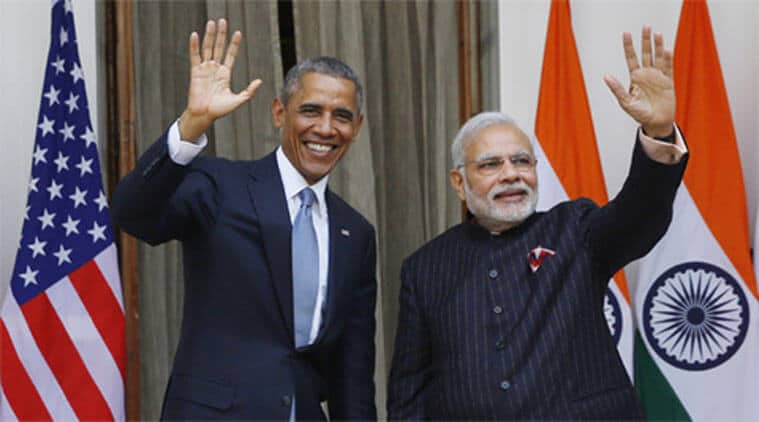Translating and localizing your brand messaging
Translating and localizing your brand messaging is a crucial step toward unlocking global success. When expanding into international markets, it's important to remember that language and cultural nuances play a significant role in how your brand is perceived.
One of the first steps in this process is translating your brand messaging accurately. Hiring professional translators who are fluent in the target language ensures that your message is not only linguistically correct but also culturally appropriate.
However, it's not just about direct translation. Localizing your brand messaging involves adapting it to resonate with the target market. This includes considering cultural references, idioms, and even color symbolism that may vary across different regions.
A successful localization strategy goes beyond language. It involves understanding the values, preferences, and behaviors of your target audience. Conducting market research and consulting with local experts can provide valuable insights into consumer behavior and help tailor your messaging accordingly.
Furthermore, adapting your brand visuals, such as logos, packaging, and advertisements, to align with local tastes and preferences can significantly enhance your brand's appeal in international markets.
By investing in proper translation and localization, you are not only bridging language barriers but also demonstrating respect for your target audience's culture. This level of attention to detail can help establish trust, build brand loyalty, and ultimately lead to global success.
Adapting your brand visuals and imagery for diverse audiences
When expanding into international markets, one of the key factors for success is adapting your brand visuals and imagery to resonate with diverse audiences. In a globalized world, it's crucial to understand that different cultures have varying preferences, values, and aesthetics. What works well in one market may not necessarily translate seamlessly to another.
The first step in adapting your brand visuals is to conduct thorough research on the target market's cultural norms, preferences, and visual language. This includes understanding color symbolism, cultural symbols, and the overall design aesthetic that resonates with the local audience. For example, while red is associated with luck and prosperity in China, it might represent danger or caution in Western cultures.
Once you have gained insights into the cultural nuances, you can start tailoring your brand visuals accordingly. This could involve modifying color palettes, typography, imagery, and even the overall layout of your visual assets. By doing so, you ensure that your brand aligns with the local aesthetic and resonates with the target audience, making it more relatable and appealing.
Moreover, it's essential to consider the inclusivity and diversity of your brand visuals. Ensure that your imagery represents a range of ethnicities, ages, and body types, reflecting the multicultural nature of your target market. By doing this, you not only show respect for the local audience but also create a sense of inclusivity that fosters a strong connection with potential customers.
Remember, adapting your brand visuals doesn't mean compromising your brand identity. It's about finding the right balance between maintaining consistency and tailoring your visuals to fit the cultural context. By effectively adapting your brand visuals to diverse audiences, you can unlock the power of branding in international markets, establishing a strong presence and connecting with customers on a deeper level.
Building brand trust and credibility in new markets
When expanding into new international markets, building brand trust and credibility becomes paramount. As a business, you are entering unfamiliar territory, where customers may have little or no knowledge of your brand. Therefore, it is crucial to establish a strong foundation of trust to ensure success in these markets.
One effective strategy is to adapt your branding efforts to resonate with the cultural and linguistic nuances of the target market. This can be achieved through localization, which involves tailoring your messaging, visuals, and even product offerings to align with the preferences and values of the local audience. By speaking their language, both figuratively and literally, you can create a sense of familiarity and trust, which are essential for building credibility.
Another vital aspect of building trust in new markets is through social proof. Testimonials, reviews, and case studies are powerful tools that showcase the positive experiences of previous customers. Sharing success stories and highlighting the satisfaction of your existing clients can go a long way in instilling confidence in potential customers in the new market.
Collaborating with local influencers or industry experts can also boost your brand's credibility. These individuals have established trust and authority within the target market and can vouch for your brand's quality and reliability. Partnering with them for endorsements or sponsorships can help you quickly gain traction and credibility among the local audience.
Finally, prioritize customer service and support in the new market. Providing exceptional support to customers, addressing their concerns promptly, and going the extra mile to ensure their satisfaction will not only build trust but also generate positive word-of-mouth referrals. This, in turn, will enhance your brand's credibility and attract more customers.
Building brand trust and credibility in new international markets requires a combination of cultural adaptation, social proof, influencer collaborations, and excellent customer service. By investing in these strategies, you can establish a solid foundation for success and unlock the full potential of your brand in global markets.
Leveraging digital marketing and social media for global branding
In today's interconnected world, digital marketing and social media have become indispensable tools for businesses aiming to establish a global brand presence. Leveraging these platforms effectively can open up a world of opportunities and propel your brand toward international success.
One of the key advantages of digital marketing is its ability to reach audiences across borders and time zones. With a well-crafted digital marketing strategy, you can target specific regions or countries, tailoring your messaging to resonate with local audiences. This level of customization allows you to build strong connections with potential customers, understanding their unique needs and preferences.
Social media, in particular, plays a pivotal role in global branding. Platforms like Facebook, Twitter, Instagram, and LinkedIn have millions of active users worldwide, presenting an immense opportunity to showcase your brand and engage with a diverse audience. By creating compelling content, sharing valuable insights, and fostering meaningful conversations, you can cultivate a loyal following and establish your brand as a trusted industry authority.
To maximize the impact of your digital marketing efforts, it's essential to conduct thorough market research and adapt your strategy to suit different cultural nuances and consumer behaviors. Localization of content, language preferences, and understanding local trends is crucial in ensuring your brand message resonates with international audiences.
Furthermore, incorporating influencer marketing into your global branding strategy can amplify your reach and credibility. Collaborating with influencers who have a strong following in your target markets can provide valuable exposure and endorsement, helping to build trust and credibility among your international audience.
Digital marketing and social media have revolutionized the way brands establish their presence in international markets. By leveraging these powerful tools effectively, you can unlock global success, expand your customer base, and position your brand as a leader in the global marketplace.
Successful international brands and their strategies
When it comes to expanding into international markets, studying successful brands and their strategies can provide valuable insights and inspiration. Let's take a closer look at some case studies of brands that have achieved remarkable success on a global scale.
Apple Inc.: Apple's iconic branding and innovative product lineup have propelled the company to become a global leader in technology. Their strategy focuses on creating a seamless user experience, captivating marketing campaigns, and a strong emphasis on design and aesthetics. By maintaining a consistent brand image and adapting its products to cater to the needs and preferences of different markets, Apple has successfully captured the hearts and minds of consumers worldwide.
Coca-Cola: With a presence in over 200 countries, Coca-Cola is a prime example of a brand that has effectively penetrated international markets. Their secret lies in their ability to adapt their messaging to resonate with local cultures while maintaining a strong global brand identity. Coca-Cola's marketing campaigns often revolve around universal themes such as happiness and togetherness, which transcend cultural barriers and connect with consumers on an emotional level.
Nike: Known for its "Just Do It" slogan and iconic swoosh logo, Nike has become synonymous with athletic excellence and empowerment. Their international success can be attributed to their ability to tap into the aspirations and desires of athletes and sports enthusiasts across different cultures. Nike's marketing campaigns often feature renowned athletes from various countries, allowing them to connect with local audiences and inspire them to pursue their athletic dreams.
These case studies highlight the importance of understanding cultural nuances, adapting marketing strategies, and maintaining a consistent brand identity when expanding into international markets. By learning from these successful brands, businesses can unlock the power of branding and create a strong global presence that resonates with customers around the world.
Challenges and pitfalls: Avoiding cultural missteps in global branding
Expanding your brand into international markets can be an exciting opportunity for growth and success. However, it's essential to be aware of the challenges and pitfalls that can arise when it comes to cultural missteps in global branding.
One of the most common mistakes made by businesses venturing into new territories is assuming that what works in their home market will automatically translate to other cultures. Cultural norms, values, and preferences vary greatly from one country to another, and it's crucial to thoroughly research and understand the target market before launching your brand there.
Language is a significant aspect of cultural sensitivity. Translating your brand name, tagline, and marketing materials accurately is vital to avoid any unintended negative connotations or misunderstandings. A simple translation error can not only harm your brand image but also lead to a loss of trust and credibility among potential customers.
Another cultural consideration is the use of symbols, colors, and imagery in branding. What may be considered positive or appealing in one culture can be interpreted differently in another. For example, the color red symbolizes luck and prosperity in Chinese culture, while in Western cultures, it can signify danger or caution. A thorough understanding of these cultural nuances is essential to ensure your branding resonates positively with your target audience.
Furthermore, cultural sensitivity goes beyond just language and visual elements. It includes understanding local customs, traditions, and social norms. For instance, using certain gestures, humor, or references that may be acceptable in one culture can be offensive or inappropriate in another. Taking the time to learn about and respect cultural differences will help you avoid any potential missteps and build a strong, inclusive brand in global markets.
To navigate these challenges successfully, consider partnering with local experts or agencies who have deep knowledge and experience in the target market. Their insights and guidance can prove invaluable in helping you navigate the cultural nuances and develop a branding strategy that resonates with the local audience.
While expanding your brand globally brings immense opportunities, it also comes with challenges related to cultural missteps. By investing in thorough research, understanding the target market's cultural nuances, and seeking expert guidance, you can unlock the power of branding in international markets and pave the way for global success.
Measuring Success and adjusting your branding strategy
Measuring the success of your branding strategy is crucial in the ever-evolving international market. Without proper evaluation, it is challenging to determine the effectiveness of your efforts and make necessary adjustments to maximize your global success.
There are several key metrics to consider when measuring the impact of your branding strategy. One of the most important is brand awareness. This can be measured through surveys, social media analytics, website traffic, and search engine visibility. By tracking the growth in brand recognition and recall, you can gauge the success of your branding initiatives.
Another metric to consider is customer engagement. How are your international customers interacting with your brand? Are they actively participating in your social media campaigns, leaving positive reviews, or sharing their experiences with others? Monitoring customer engagement provides valuable insights into how well your branding resonates with your target audience.
Sales and revenue growth are also critical indicators of branding success. Keep a close eye on your international sales figures and analyze whether there are any notable spikes or dips following specific branding activities. This will help you determine which strategies are driving tangible results.
Furthermore, tracking customer loyalty and retention rates can provide insights into the long-term impact of your branding efforts. Are international customers returning to make repeat purchases? Are they recommending your brand to others? A high level of customer loyalty indicates that your branding strategy is effectively creating a positive and lasting impression.
It's important to regularly review and analyze these metrics to identify any areas where your branding strategy may need adjustment. This might involve refining your messaging, adapting to cultural nuances, or exploring new marketing channels to reach your international audience more effectively.
By measuring the success of your branding strategy in international markets and making data-driven adjustments, you can unlock the full potential of your brand and achieve global success.
Harnessing the Power of Branding for global success
In today's interconnected world, expanding your business into international markets has become more accessible than ever before. However, achieving success in these markets goes beyond simply offering your products or services to a new audience. It requires strategic thinking, adaptability, and the power of branding.
Branding plays a pivotal role in unlocking global success. It is the essence of your company's identity and how it resonates with customers across different cultures and languages. A well-established brand creates trust, credibility, and loyalty, which are essential for gaining a foothold in international markets.
By harnessing the power of branding, you can effectively communicate your unique value proposition and differentiate yourself from competitors in foreign markets. This involves understanding the cultural nuances, preferences, and behaviors of your target audience in each market. Tailoring your brand messaging, visual identity, and customer experience to align with these local factors will enable you to connect with customers on a deeper level and foster brand affinity.
Moreover, strong branding facilitates market entry and expansion by mitigating the risks associated with entering unfamiliar territories. A recognizable and reputable brand instills confidence in potential customers, distributors, and partners, making it easier to establish partnerships and secure distribution channels in new markets. It also enables you to command premium prices, as customers are willing to pay more for brands they trust.
Branding is a powerful tool that can propel your business toward global success. By investing in building a strong and adaptable brand, understanding the unique needs and expectations of your target audience in each market, and consistently delivering on your brand promise, you can unlock new opportunities, cultivate a loyal customer base, and position your business for growth and prosperity in international markets. Embrace the power of branding and open the doors to a world of possibilities.
We hope you found our blog post on the power of branding in international markets insightful and informative. In today's globalized world, expanding into international markets is essential for businesses looking to achieve global success.









 English (US) ·
English (US) ·